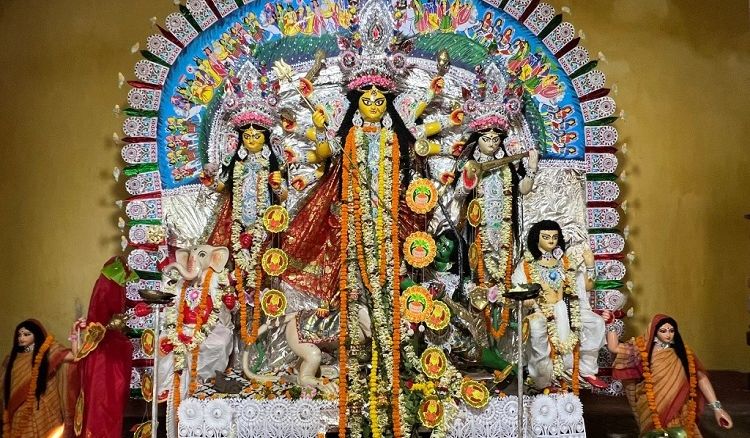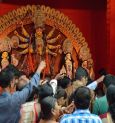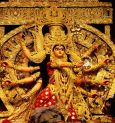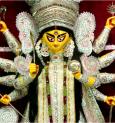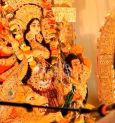In the heart of Baruipur, within the historic precincts of Ramnagar, a tradition spanning 141 years unfolds at the Ghosh residence. While the era of zamindari and bonedi customs has faded into the past, this home continues to carry the torch of tradition during Durga Puja.
During colonial rule, the illustrious Lord Canning, a prominent figure in the Ghosh family, paid a visit to the "Ghosh Bari" during Durga Puja. His association with the festivities left an indelible mark. Lord Canning, amidst the grandeur of the Ghosh residence, spent hours participating in the Puja rituals.
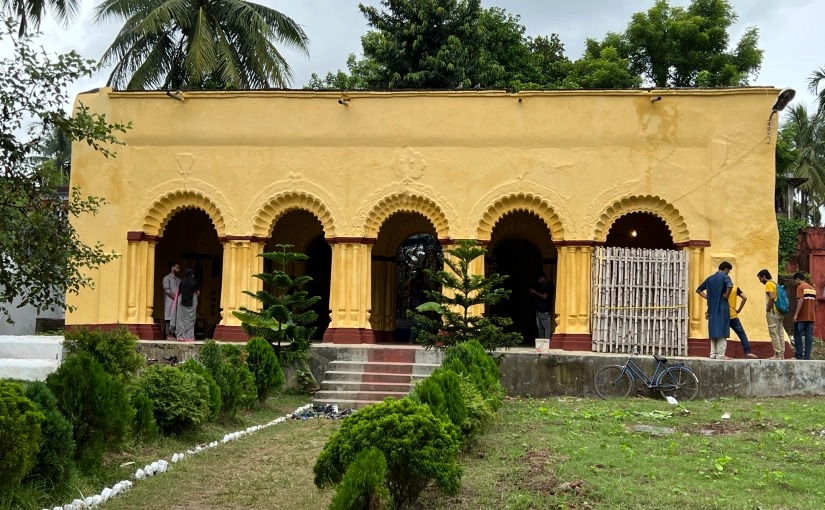
Fast forward to the present day, and Malay Ghosh, a scion of the family, now heads the household. The traditional "Chhag Bali" custom has given way to contemporary practices, with offerings like akhni (a spiced rice dish) and chal kumro (pumpkin curry) gracing the festive table on Ashtami.
Historical records indicate that the first zamindar of Ramnagar's Ghosh residence was Kailas Ghosh, which lends its name to the house, 'Kailas Bhavan.' Over the years, this house has witnessed the likes of Utam Kumar, Sabitri Chatterjee, and many others gracing its premises for film shoots.
It was Kailas Babu's son, Naren Ghosh, who introduced the tradition of Durga Puja at the Ghosh residence during the colonial period. This tradition has endured through generations and remains alive today. In the Ghosh residence, preparations for crafting the idol begin with great fervour as the countdown to Mahalaya commences.
Members of the Ghosh family, now spread across different parts of the country, gather here during these few days, rekindling bonds and rejoicing in the spirit of Puja. In earlier times, on Shashti, villagers would flock to the house to savour the delights of kachu (a dish made from colocasia) and deshi chingri (shrimp) prepared by the Ghosh family. Although the numbers have dwindled, the tradition of enjoying a vegetarian feast on Ashtami still prevails.
From Saptami to Dashami, the Ghosh residence opens its doors to all, and the surrounding villages' women also join in to witness the Sandhi Puja.
One unique aspect is the annual change in the Durga idol's placement. Following the Zamindari tradition, the idol is immersed in the "Heduar Pukur," a pond known throughout the region. Even English sahibs once graced the waters of this pond with their presence.
The Ghosh residence, with its enduring traditions, serves as a reminder of a bygone era and continues to symbolise the spirit of Durga Puja, blending history with the vibrant present.
 বাংলায় পড়ুন
বাংলায় পড়ুন


